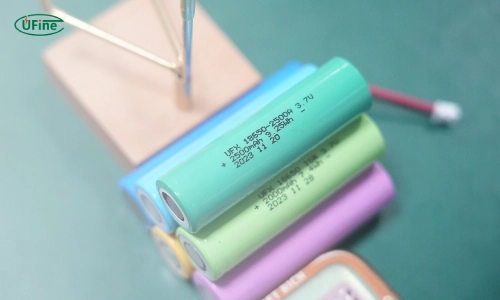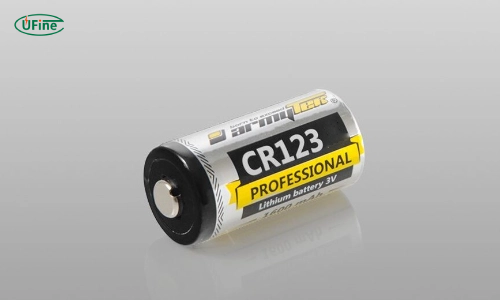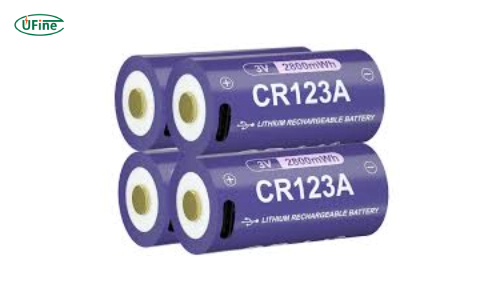In today’s world, batteries power many of our daily devices, from flashlights to cameras, and understanding the differences between various types can be crucial. The 18650, CR123, and CR123A batteries are among the most popular battery types. Each battery has unique characteristics that make it suitable for different applications. This article delves into a comprehensive comparison of these three battery types, highlighting their features, uses, and advantages.
Part 1. What is an 18650 battery?
The 18650 battery is a type of rechargeable lithium-ion battery. The name “18650” refers to its dimensions: 18mm in diameter and 65mm in length. These batteries are known for their high energy density, long cycle life, and ability to deliver high currents. They are commonly used in laptops, power tools, and electric vehicles.
Key Features of 18650 Batteries:
- Rechargeable: Can be recharged multiple times.
- High Energy Density: Stores a significant amount of energy.
- Long Cycle Life: Durable with many charge and discharge cycles.
- High Current Delivery: Suitable for high-drain devices.
Part 2. What is a CR123 battery?
The CR123 battery is a non-rechargeable lithium battery. It is often used in high-drain devices because it delivers a high voltage of 3V. These batteries are smaller, measuring 17mm in diameter and 34.5mm in length, making them compact and lightweight.
Key Features of CR123 Batteries:
- Non-rechargeable: Designed for single use.
- High Voltage: Provides a consistent 3V output.
- Compact Size: Easily fits into smaller devices.
- High Energy Density: Offers long-lasting power.
Part 3. What is a CR123A battery?
The CR123A battery is essentially the same as the CR123 battery, with identical dimensions and specifications. The “A” in CR123A does not indicate a different type. Still, the designation manufacturers use to differentiate between lithium primary and rechargeable batteries. Both CR123 and CR123A are typically non-rechargeable and provide a high voltage of 3V.
However, it’s important to note that rechargeable versions of the CR123A battery are available, often referred to as RCR123A or 16340 batteries. These rechargeable lithium-ion batteries usually operate at a slightly higher voltage of 3.6V or 3.7V. They are suitable for devices designed to support rechargeable batteries.
Key Features of CR123A Batteries:
- Non-rechargeable: Single-use battery.
- High Voltage: Delivers 3V consistently.
- Compact and Lightweight: Fits into various small devices.
- Long Shelf Life: Retains charge for extended periods.
Key Features of Rechargeable CR123A (RCR123A) Batteries:
- Rechargeable: Can be recharged multiple times.
- Higher Voltage: Typically 3.6V or 3.7V.
- Environmentally Friendly: Reduces waste compared to single-use batteries.
Part 4. 18650 vs. CR123 Battery
When comparing the 18650 and CR123 batteries, several factors come into play, including capacity, rechargeability, cost efficiency, and applications.
Capacity and Performance
- 18650 Batteries: Typically range from 1800mAh to 3500mAh, offering higher capacity and longer usage before recharging.
- CR123 Batteries: Usually have a capacity of around 1400mAh to 1500mAh, sufficient for short-term use but less long-lasting than 18650 batteries.
Rechargeability and Cost
- 18650 Batteries: Rechargeable, which can lead to long-term cost savings despite a higher initial investment.
- CR123 Batteries: Non-rechargeable, meaning users must frequently replace them, which can add up over time.
Applications
- 18650 Batteries: Best suited for high-drain devices like laptops, power tools, and electric vehicles.
- CR123 Batteries: Ideal for compact devices such as cameras, medical devices, and tactical flashlights.
Conclusion of 18650 vs. CR123
While the 18650 battery offers higher capacity and long-term cost savings through rechargeability, the CR123 battery is preferable for smaller, high-drain devices where size and weight are critical. The choice between these two depends mainly on the specific needs of the device and user preferences regarding cost and convenience.
Part 5. CR123 vs CR123A Battery
Comparing CR123 and CR123A batteries is straightforward since they are identical in specifications and performance. However, users should be aware of the availability of rechargeable versions of the CR123A battery.
Specifications
- CR123 and CR123A: Both provide a high voltage of 3V and have similar capacities ranging from 1400mAh to 1500mAh.
- Rechargeable CR123A (RCR123A): Typically offers a voltage of 3.6V or 3.7V and can be recharged multiple times.
Applications
- CR123 and CR123A: Both are used interchangeably in various devices, such as cameras, security systems, and flashlights.
- Rechargeable CR123A (RCR123A): Suitable for devices that support rechargeable batteries, offering an environmentally friendly alternative.
Market Availability
- CR123 and CR123A: Widely available and often used in specialized fields requiring reliable power in a compact form.
- Rechargeable CR123A (RCR123A): Gaining popularity due to their reusability and environmental benefits.
Conclusion of CR123 vs CR123A
Since the CR123 and CR123A batteries are virtually identical, they can be used interchangeably without any significant difference in performance. However, the rechargeable CR123A (RCR123A) offers a sustainable option for users looking to reduce waste and save on long-term costs. The choice between these ultimately comes down to branding, availability, and whether rechargeable options are preferred.
Part 6. FAQs
-
Can you replace CR123 with 18650?
No, you cannot directly replace a CR123 battery with an 18650 battery. They have different sizes and voltage ratings. CR123 batteries are smaller and typically have a voltage of 3V, while 18650 batteries are larger and have a voltage of around 3.7V. Using the wrong battery can damage your device or cause it to malfunction. Always check your device’s specifications to ensure compatibility. -
What battery can I use instead of 18650?
If you need a replacement for an 18650 battery, you can use other batteries with similar specifications, like the 21700 or 20700 batteries. These batteries have similar voltages and capacities but may have slightly different dimensions. Ensuring the replacement battery fits your device appropriately and meets the voltage and current requirements is essential. -
What battery can replace CR123A?
A suitable replacement for a CR123A battery is the rechargeable RCR123A or 16340 battery. These batteries have similar sizes and voltage ratings, making them suitable replacements. However, be sure your device supports rechargeable batteries before using them. Non-rechargeable CR123A batteries are commonly used in many devices, so check your device’s manual for compatible battery types. -
Is CR17335 the same as CR123A?
Yes, the CR17335 is the same as a CR123A battery. They share the exact dimensions and voltage ratings. The naming difference arises from different manufacturers or standards, but they are interchangeable in most devices. Always double-check your device’s specifications to confirm compatibility before making a replacement. -
How long does a CR123A battery last?
The lifespan of a CR123A battery depends on the device it powers and how frequently it is used. A CR123A battery can last from several months to a few years. For example, low-drain devices like smoke detectors might last up to three years. The battery may only last a few hours of continuous use in high-drain devices like digital cameras. Always consider the specific use case and power consumption of your device.
Related Tags:
More Articles

How to Correctly Solder Multiple Lithium Batteries Together?
Learn step-by-step how to solder lithium batteries in series or parallel safely and effectively with this detailed, hands-on guide.
Choosing Batteries for Trolling Motors Lightweight: Charger Options
Lithium batteries are best for trolling motors as they are lightweight long long-lasting, and efficient. This guide covers selection, charging, and care tips.
Finding 11.1 V LiPo Battery Near Me: B2B Supplier Strategies
Need 11.1V LiPo batteries near you? This guide helps B2B buyers source reliable suppliers, compare specs, and ensure safe, cost-effective deals.
11.1 V LiPo Battery 5000 mAh: Specs That Matter for Industrial Use
An 11.1V 5000mAh LiPo battery offers high capacity and stable power, ideal for drones, robotics, and industrial tools requiring long runtimes.
Lightweight Battery Packs for Trolling Motors: Top Features
Looking for the best lightweight trolling motor battery? This guide covers top features, battery types, and tips to boost your boating performance.






